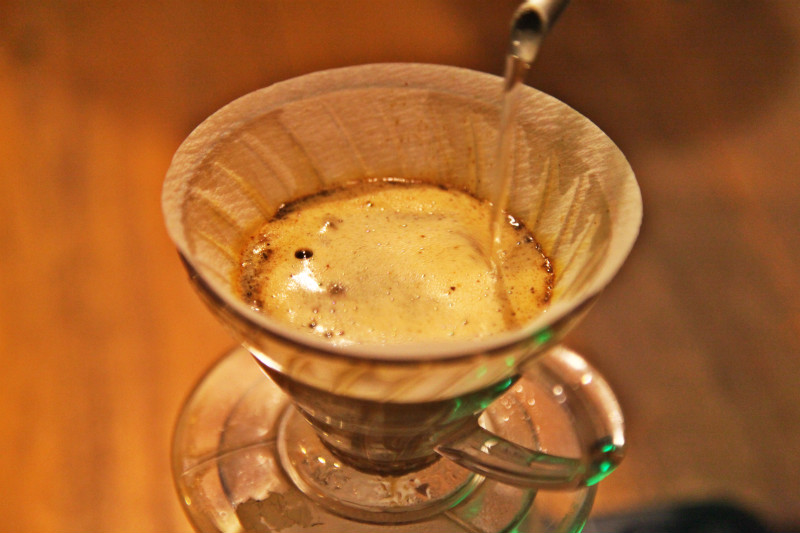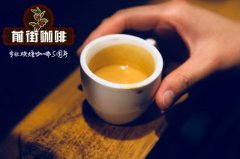Introduction to the characteristics of Sidamo Coffee letter from Bonbe Village Higai processing Factory in Bombe Village, Xidamo production area

Professional coffee knowledge exchange more coffee bean information please follow the coffee workshop (Wechat official account cafe_style)
Sidamo can also be said to be the birthplace of sun bean treatment, and most of the good sunburn also comes from Sidamo. The Xigai processing plant is located in the village of Bonbe Village in Sidamo District in southern Ethiopia. The altitude is between 1900 and 2100 meters. In addition to the pleasant climatic conditions, the fertile red brown soil in the coffee growing park is one of the key factors to produce superior quality of raw beans in this area. The sun beans in the Sidamo area taste rich and special, and are irreplaceable in many countries. They are rich in fruit flavor, but have a gentle and burden-free feeling. They are recommended beans.
Sidamo, Yega Xuefei, and Kochare are the main producing areas of fine washed beans. The best-known Yegashifi is a small city north of Sidamo, with an average elevation of between 1850 and 2400 and an average annual rainfall of 1300mm. Because of its unique geographical environment and special flavor, it is independent from the Sidamo producing area. Yega Chuefei is famous for its perfume, jasmine and citrus features. Sun Yega Chevy has a strawberry and creamy taste, while Hara / Sidamo has a wild blueberry flavor.
◎ G1 level:
According to the classification of Ethiopian coffee beans, there are no more than 3 defective beans per 300g raw beans. The raw beans are almost the same in size and beautiful in appearance. After drinking, they can taste the unique multi-level taste.
Producing area of raw beans: Ethiopia
Treatment method: solarization treatment
Flavor description: citrus, grape, papaya, drupe
Baking degree: medium and shallow baking
Grade: G1 [no more than 3 defective beans per 300 grams of raw beans]
Important Notice :
前街咖啡 FrontStreet Coffee has moved to new addredd:
FrontStreet Coffee Address: 315,Donghua East Road,GuangZhou
Tel:020 38364473
- Prev

Introduction of Micro-batch Peruvian Fine Coffee made by Geisha in Vera Rika Manor, Peru
For more information on coffee beans, please follow the Coffee Workshop (official Wechat account cafe_style). In Peru, the geisha washing microbatches are mainly small farmers, each with a land area of less than two hectares, producing about 3000 pounds of coffee per hectare. Organic cultivation has a very long history and is quite common in Peru. But in recent years,
- Next

Introduction of Tanzanian boutique coffee with pearl round beans in Matti Manor, Tanzania
Professional coffee knowledge exchange more coffee bean information please pay attention to the coffee workshop (Wechat official account cafe_style) Tanzania Arusha Mtei Estate PB variety N39 producer Edwin Mtei area of 21 hectares to wash the cup to test the flavor: flower, sweet, honey, citric acid, delicate taste. The landowner Edwin Mtei was in Kyrgyzstan in 1932.
Related
- Detailed explanation of Jadeite planting Land in Panamanian Jadeite Manor introduction to the grading system of Jadeite competitive bidding, Red bid, Green bid and Rose Summer
- Story of Coffee planting in Brenka region of Costa Rica Stonehenge Manor anaerobic heavy honey treatment of flavor mouth
- What's on the barrel of Blue Mountain Coffee beans?
- Can American coffee also pull flowers? How to use hot American style to pull out a good-looking pattern?
- Can you make a cold extract with coffee beans? What is the right proportion for cold-extracted coffee formula?
- Indonesian PWN Gold Mandrine Coffee Origin Features Flavor How to Chong? Mandolin coffee is American.
- A brief introduction to the flavor characteristics of Brazilian yellow bourbon coffee beans
- What is the effect of different water quality on the flavor of cold-extracted coffee? What kind of water is best for brewing coffee?
- Why do you think of Rose Summer whenever you mention Panamanian coffee?
- Introduction to the characteristics of authentic blue mountain coffee bean producing areas? What is the CIB Coffee Authority in Jamaica?

